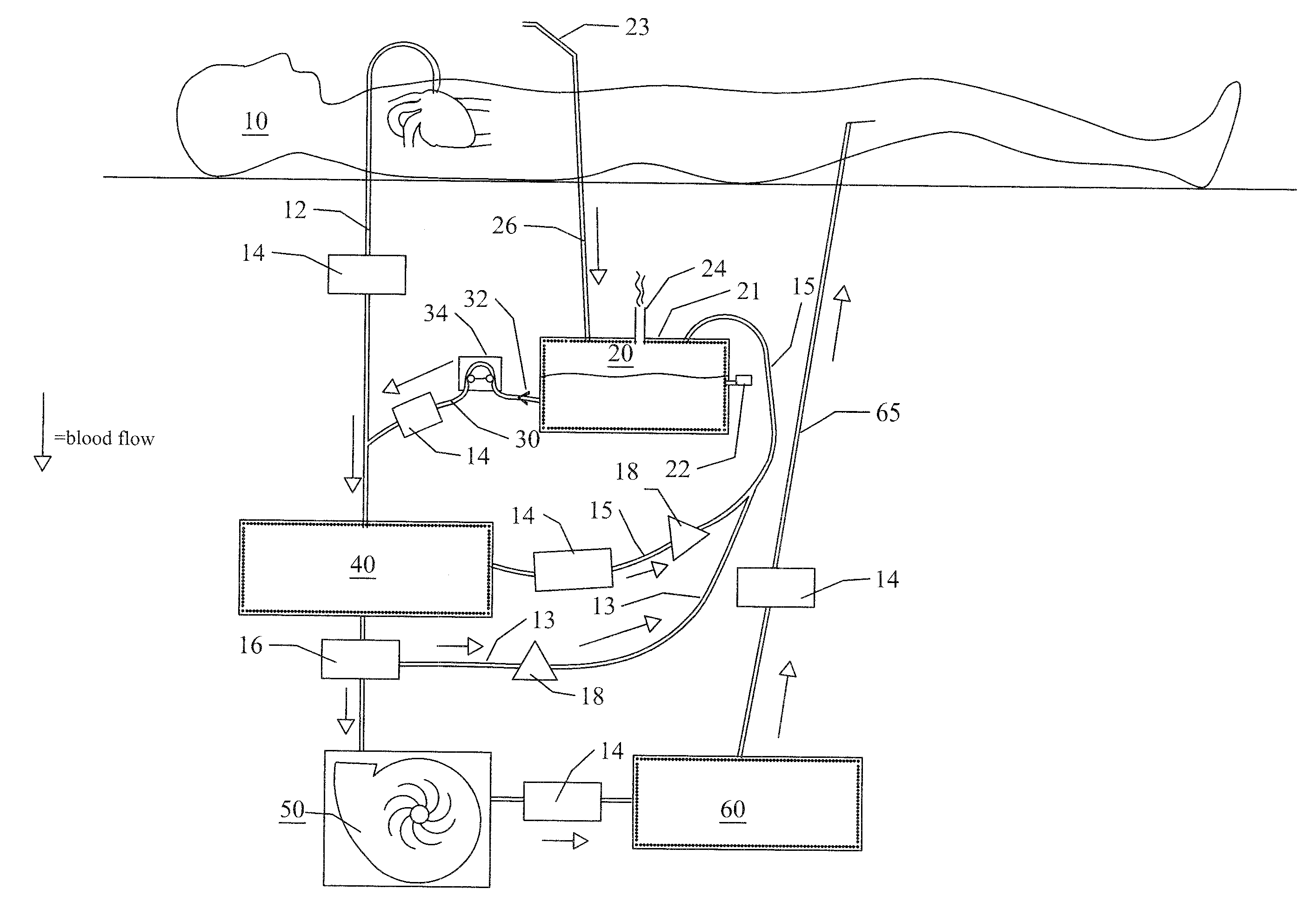Extracorporeal blood circuit for cardiopulmonary bypass
a cardiopulmonary bypass and extracorporeal technology, applied in the field of extracorporeal blood circuit for cardiopulmonary bypass, can solve the problems of difficult management of circuits, inability to easily and successfully use devices that augment or replace cardiac function for adult patients, and inability to meet the needs of pediatric patients, so as to reduce the contact between blood and space, reduce the effect of blood flow, and less blood flow
- Summary
- Abstract
- Description
- Claims
- Application Information
AI Technical Summary
Benefits of technology
Problems solved by technology
Method used
Image
Examples
Embodiment Construction
[0018]The subject invention provides new and advantageous mechanical circulatory support devices and methods. More specifically, the subject invention provides extracorporeal life support (ECLS) devices, capable of providing extracorporeal cardiopulmonary support for adult, pediatric and neonatal cardiac patients.
[0019]The subject invention provides an improved bypass circuit for use in adult and pediatric cardiac surgery. Advantageously, this system occupies less space than existing systems, requires the use of less blood, reduces the contact between blood and tubing, eliminates the need for multiple blood pumps, reduces damage to blood cells, simplifies blood flow and fluid management and also reduces the incidence of arterial line emboli.
[0020]The term “patient” as used herein, describes an animal, including mammals, to which the systems and methods of the present invention are applied. Mammalian species that can benefit from the disclosed systems and methods include, but are not...
PUM
 Login to View More
Login to View More Abstract
Description
Claims
Application Information
 Login to View More
Login to View More - R&D Engineer
- R&D Manager
- IP Professional
- Industry Leading Data Capabilities
- Powerful AI technology
- Patent DNA Extraction
Browse by: Latest US Patents, China's latest patents, Technical Efficacy Thesaurus, Application Domain, Technology Topic, Popular Technical Reports.
© 2024 PatSnap. All rights reserved.Legal|Privacy policy|Modern Slavery Act Transparency Statement|Sitemap|About US| Contact US: help@patsnap.com










